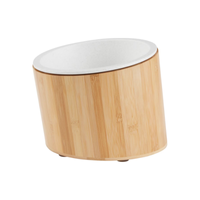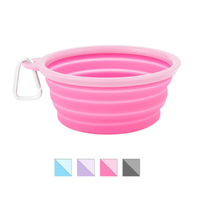Can dogs eat cabbage? I'm a vet, here's whether it’s safe to eat
Can dogs eat cabbage? These are the best types of cabbage to feed dogs and how to prepare it.
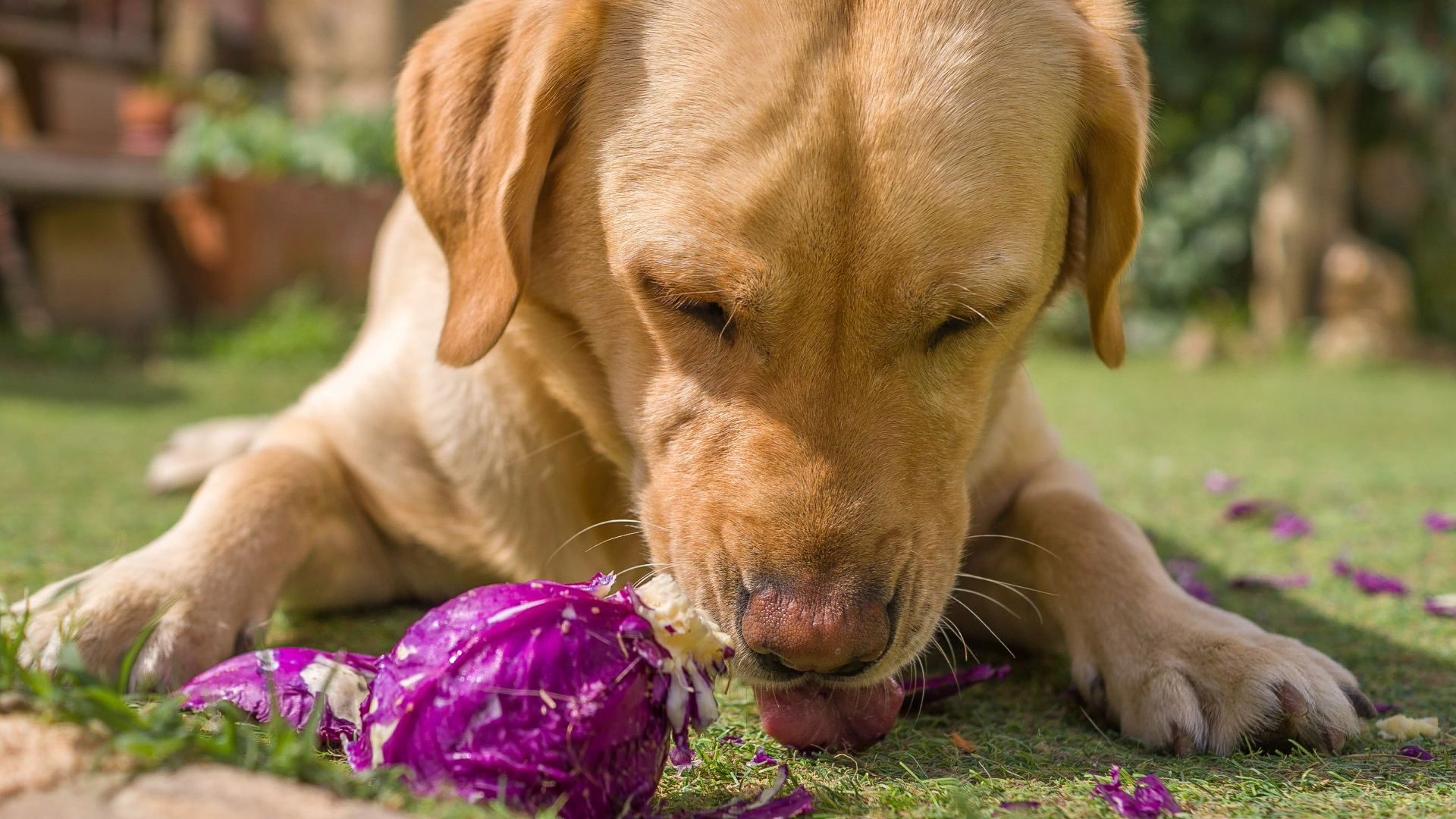
Are you wondering, 'Can dogs eat cabbage?' As a dog owner, I know what it feels like to have those big eyes looking at you begging for a scrap. In fact, my dog has got significantly worse at begging since my baby started eating solids (and dropping them on the floor).
But not everything is safe! Whether it’s because they’re begging or because they’ve snaffled what’s been dropped, it’s important to know what human foods are safe for dogs.
Whilst it’s a good idea to mainly feed your dog the best dog food, a little tidbit – of the right things – won’t do them any harm. So, what’s safe? I think most people know that a little skinless plain chicken is ok, but what about vegetables? Can dogs eat cabbage? I’ve been a vet for eight years now, and here’s what I know about dogs and cabbage.
Can dogs eat cabbage?
Cabbage - like broccoli, turnip, and brussels sprouts - it's a member of the brassica family. You’ll be pleased to know that dogs can eat everything in this family – although they may not want to! Cabbage, like its relatives, can be a little bitter, and some people find the smell from the sulfur-containing compounds to be off-putting. Nevertheless, cabbage is safe for dogs to eat.
While there’s no scientific evidence of health benefits of cabbage in dogs, the nutrient profile of cabbage shows plenty of useful nutrients that are sure to be helpful. For example, cabbage is high in vitamin K – an important vitamin for blood clotting – and vitamin C – known for its importance in the immune system. Cabbage is also high in fiber, which helps to bulk out the stool and create a healthy digestive system.
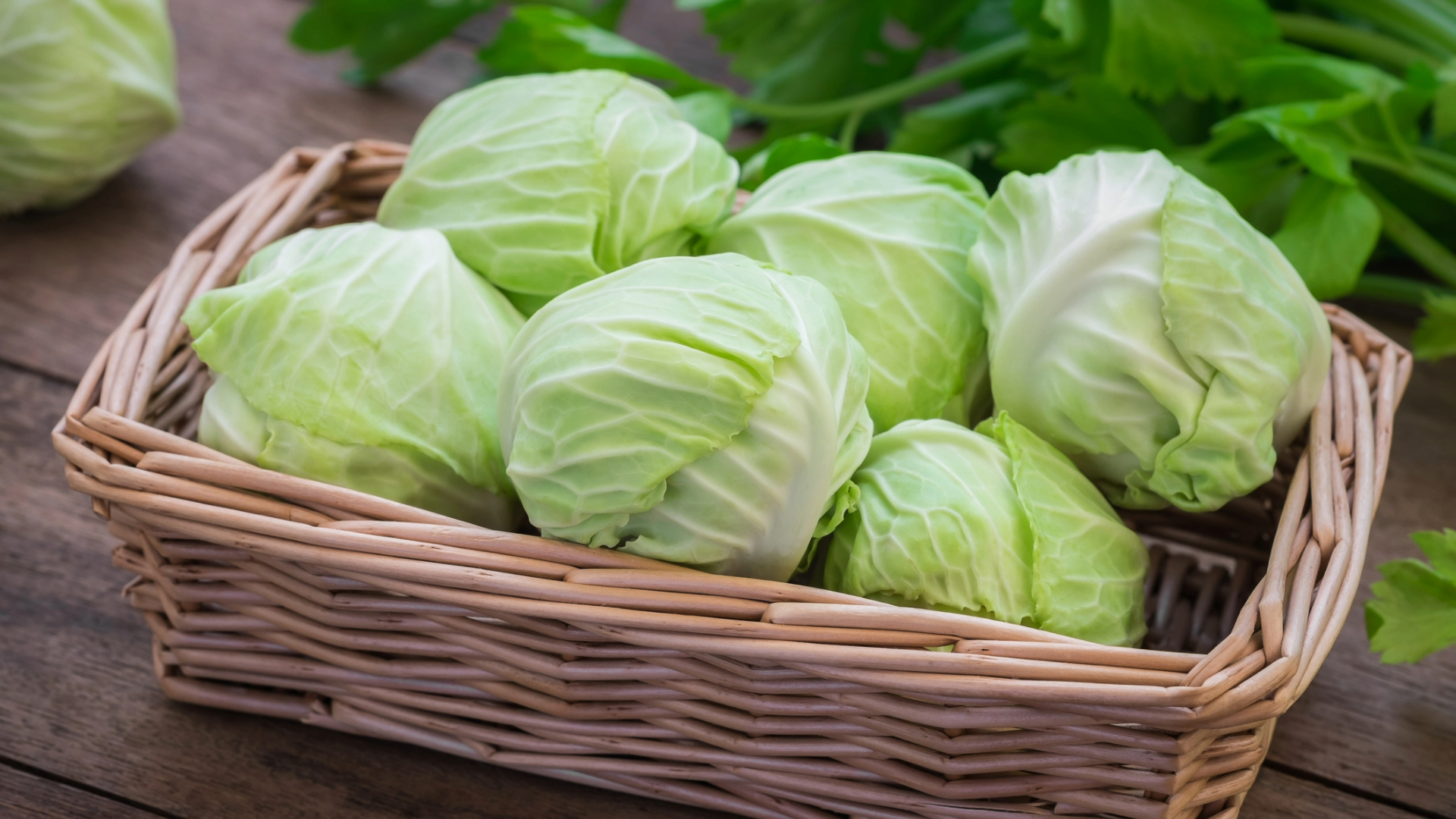
Is cabbage bad for dogs?
Cabbage is safe for dogs to eat, but it might have some unexpected side effects, especially if your dog isn’t used to eating it.
Cabbage has quite a lot of fiber in it – both soluble and insoluble fiber – which is usually a good thing due to its prebiotic effect. However, sudden changes in fiber type and amount can cause bloating and flatulence as the fiber is digested by bacteria in the gut.
Feeding small amounts of cabbage, especially at first, is the best way to avoid this sometimes smelly side effect.
What cabbage can dogs eat?
If you’re particularly culinary-oriented, you might wonder whether dogs can eat all types of cabbage. White cabbage, Chinese cabbage, red cabbage and savoy cabbage are all safe for dogs to eat. Here’s a little about each:
- White cabbage is safe for dogs to eat. It has all the same potential health benefits as normal cabbage, so don’t worry if you can’t find your usual green stuff!
- Chinese cabbage (also called Napa cabbage) is a long cabbage with a large white stem that looks a little more like a lettuce than a cabbage. It’s less bitter than normal cabbage and dogs seem to like it. Luckily, Napa cabbage is safe for dogs!
- Red cabbage gets its color from the anthocyanins it contains. There’s evidence that eating foods rich in anthocyanins reduces the risk of heart disease in people, but it’s not clear whether it has the same benefits for dogs, since they generally have very different heart problems. It’s safe for dogs, and because it’s less bitter and more crunchy, they may even prefer it.
- Savoy cabbage is a type of dark green cabbage with wrinkled leaves that’s harvested in colder weather. It’s got more minerals and vitamin A than normal cabbage, but it’s slightly lower in soluble fiber. Savoy cabbage is also safe for dogs to eat.
It doesn’t really matter which type of cabbage you feed your dog – they’re all safe, and they have similar nutritional benefits – why not try them all and see which one your dog prefers?
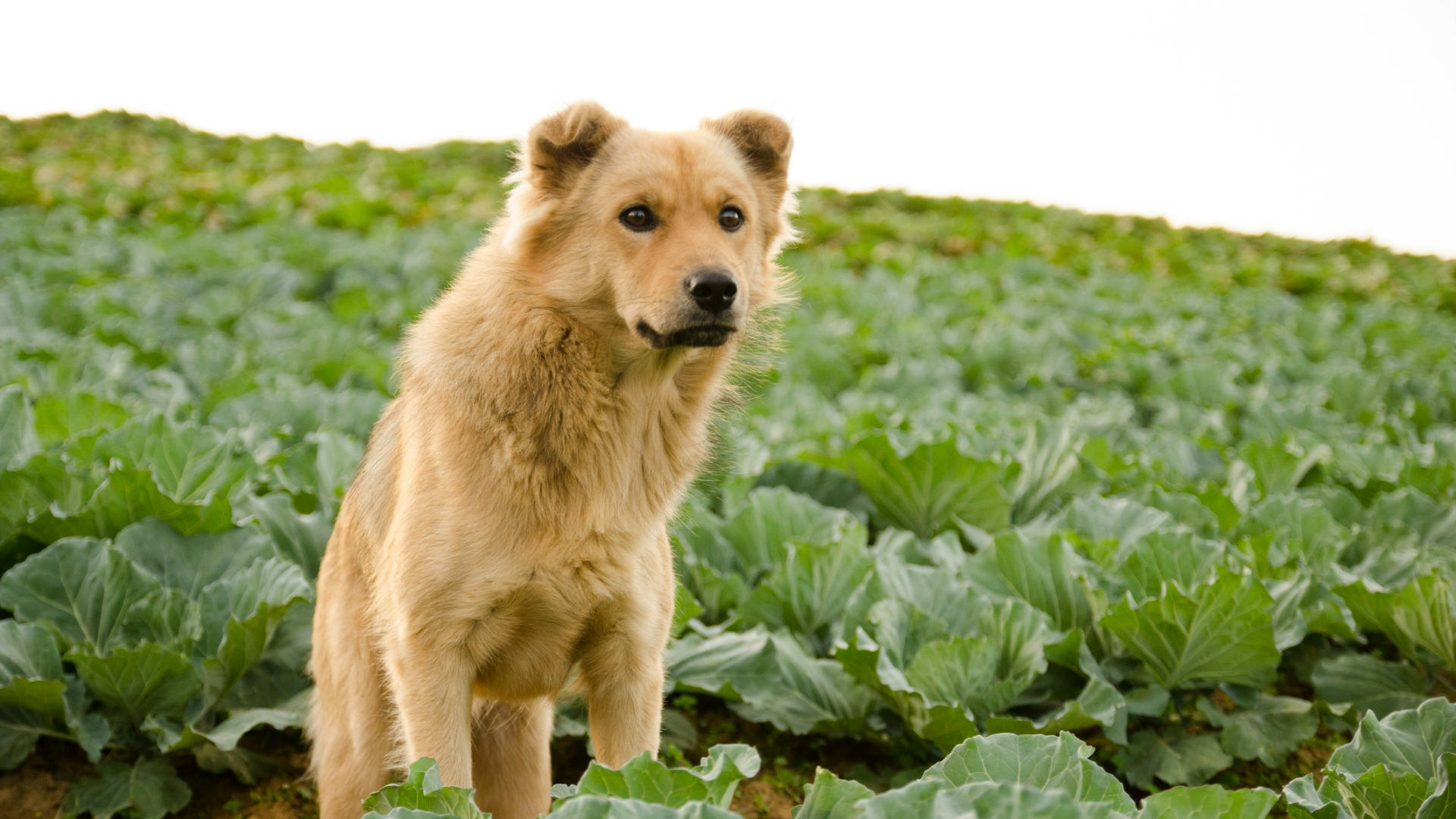
Can dogs eat cabbage cooked?
Dogs can eat both cooked and raw cabbage, but they’re likely to prefer cooked cabbage as it’s less bitter. If you’re cooking cabbage for your dog, make sure you don’t cook it with potentially toxic ingredients (like onion or garlic) or too much fat or salt (such as in oil and butter), as these can be harmful.
Instead, boiling in plain water or gently steaming are the best ways to cook cabbage for dogs. I’ve also listed some other ways you can serve your dog cabbage below:
1. Try grating a small amount of raw cabbage on top of your dog’s food.
2. A small amount of chopped cabbage can be blanched in boiling water for a minute until just softened, then mixed with food.
3. Cabbage for dogs can also be steamed over boiling water for a minute or two to preserve the nutrients.
4. Try putting a cabbage leaf in the oven on a low heat until it is dried, then crumbling it into a powder to add to your dog’s food. A teaspoon of powder will be plenty for most dogs.
Remember, not all dogs will like cabbage. As long as their normal diet is complete and balanced, they don’t need additions, so don’t stress it if your pet doesn’t seem to want to eat their cabbage!
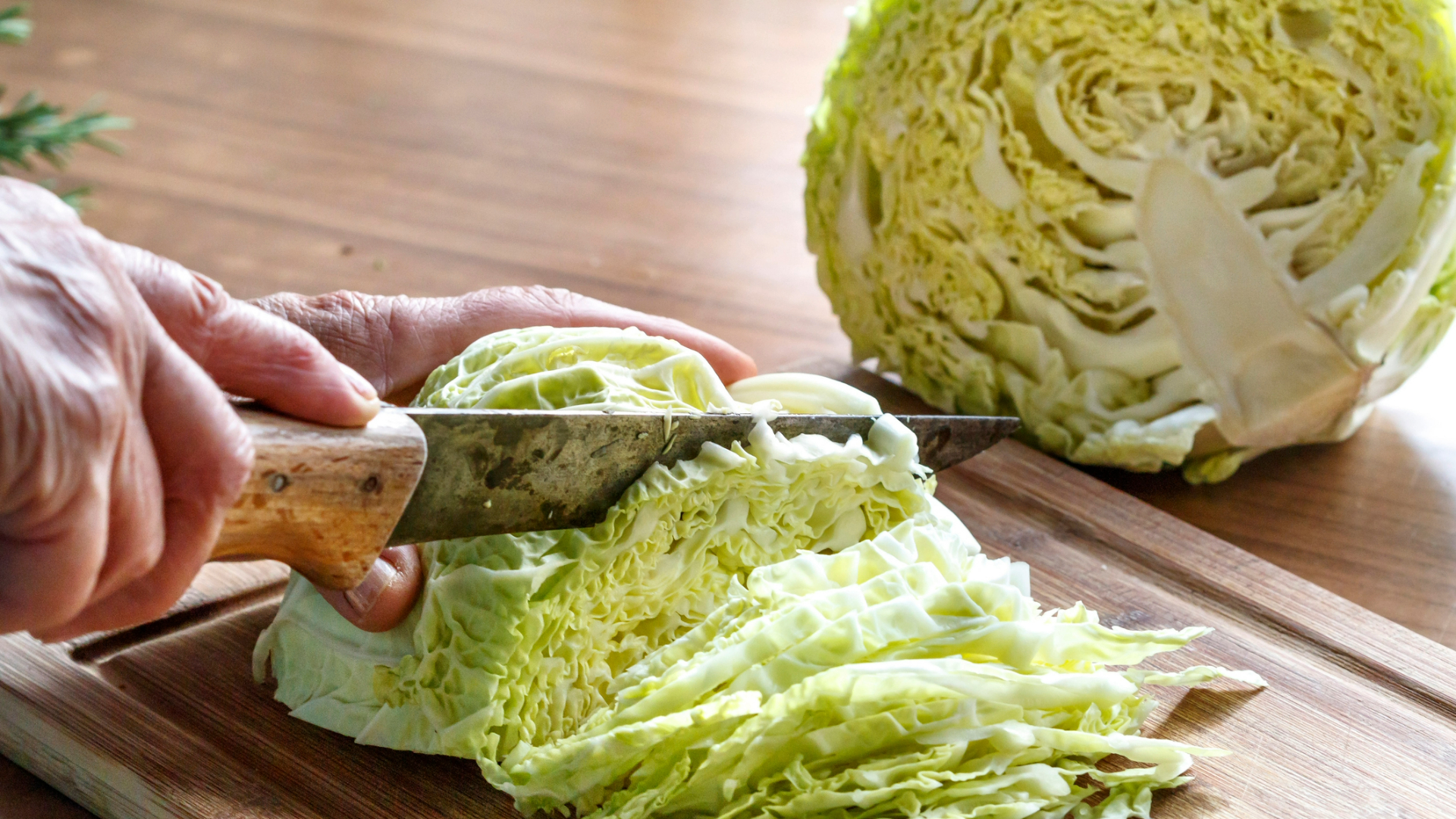
How much cabbage can dogs eat?
Too much cabbage can cause problems for dogs. The high fiber content can to cause digestive issues like diarrhea in dogs. Not only this, but if your dog gets too many of their calories from cabbage it will start to unbalance their diet, potentially leading to nutritional deficiencies.
While there isn’t a hard-and-fast rule about how much cabbage dogs can eat, I tend to advise not to give dogs more than a tablespoon of cooked or raw cabbage a day – and no more than a teaspoon of dried cabbage. Puppies and small dogs will generally need about half this, while if your dog is over 25kg you can potentially give them a little more.
When your dog first has cabbage, give them half the intended amount for the first three days, then move up to the full amount if they’re coping with the additional fiber.
What vegetables can dogs eat?
While people often think of dogs as carnivorous, this isn’t true. Dogs and their ancestors would have eaten human leftovers for thousands of years, and in doing so they developed genes to allow them to digest carbohydrates like those found in vegetables. This means there’s a surprising number of vegetables that dogs can eat. Some popular vegetables for dogs include:
- Sweet potato – high in fiber and vitamins A, B6 and C
- Avocado – high in essential fatty acids for skin and joint health
- Peas – high in vitamin B and protein
- Carrots – low in calories, high in fiber and antioxidants
- Zucchini (also known as courgette) – low in calories and high in water, so great for weight loss
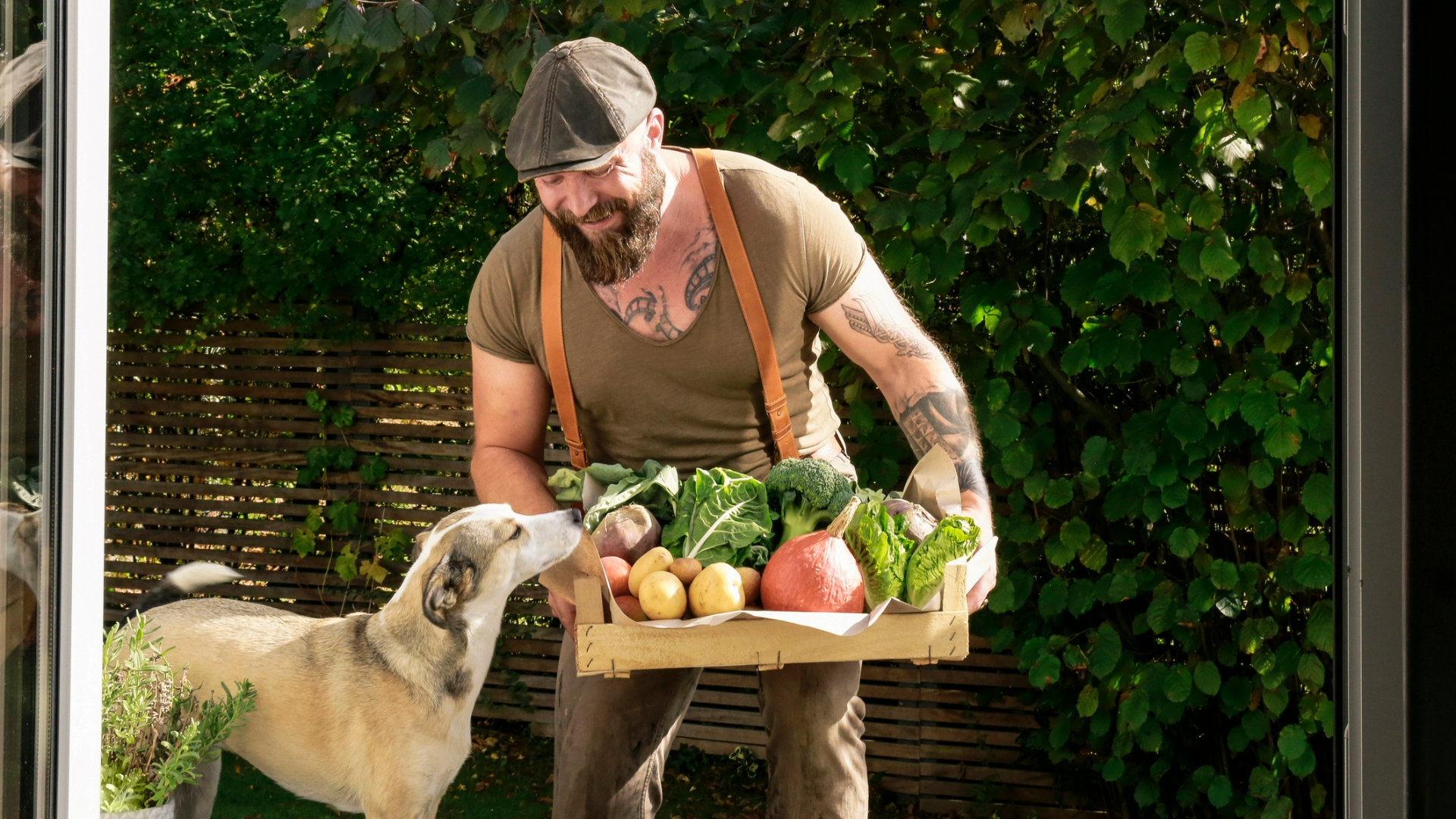
Cabbage is a low-calorie, high-vitamin addition to your dog’s diet. As with all human foods, you shouldn’t over-feed it – just a small amount added to your dog’s diet occasionally is fine.
If your dog likes cabbage, why not try other vegetables too? Find out can dogs eat broccoli and can dogs eat tomatoes.
FRISCO Slanted Non-Skid Elevated Bamboo Melamine Bowl with Bamboo Stand, 6 cup
This elevated food bowl is perfect for senior dogs or those with neck pain so they don’t have to reach so far to eat. It’s made of melamine, which is easy to clean, and the non-skid pads mean less mess in the kitchen – a winner all round!
Prima Pets Collapsible Silicone Travel Dog & Cat Bowl with Carabine
This collapsible bowl is perfect for when you're on the go. Not only is it dishwasher safe (making your life easier) but it also comes in four different colors.
PetsRadar Newsletter
Get the best advice, tips and top tech for your beloved Pets
After graduating as a vet from the University of Nottingham, Dr Joanna Woodnutt went on to practice companion animal medicine in the Midlands. Since then, she has also written for countless online and print publications and is a regular contributor for Edition Dog Magazine.
